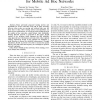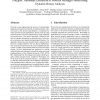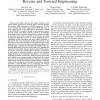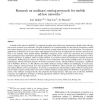349 search results - page 4 / 70 » An Extended Link Reversal Protocol in Dynamic Networks |
NDSS
2008
IEEE
14 years 3 days ago
2008
IEEE
Protocol reverse engineering is the process of extracting application-level specifications for network protocols. Such specifications are very helpful in a number of security-re...
ICC
2007
IEEE
14 years 2 days ago
2007
IEEE
— Many previously proposed routing metrics and algorithms for ad hoc networks work well in static networks, however, when nodes are moving and wireless links may fail from time t...
CCS
2007
ACM
13 years 12 months ago
2007
ACM
Protocol reverse engineering, the process of extracting the application-level protocol used by an implementation, without access to the protocol specification, is important for m...
INFOCOM
2006
IEEE
13 years 11 months ago
2006
IEEE
— This paper analyzes and designs medium access control (MAC) protocols for wireless ad-hoc networks through the network utility maximization (NUM) framework. We first reverse-e...
CN
2008
13 years 5 months ago
2008
A mobile ad-hoc network (MANET) is composed of mobile nodes without any infrastructure. Mobile nodes self-organize to form a network over radio links. The goal of MANETs is to ext...




